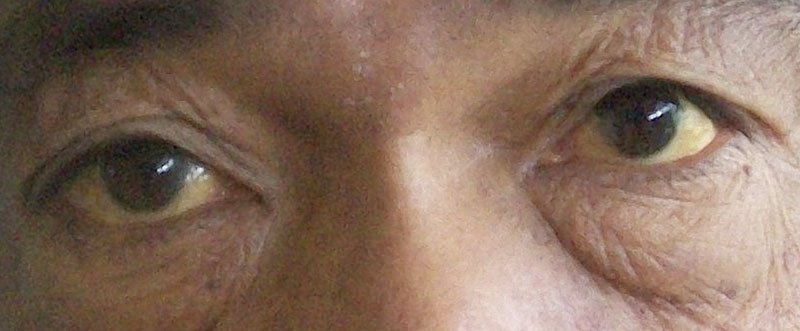Squint or strabismus is a disorder in which the eyes are not aligned in the same direction. It is more commonly seen in children and may be associated with amblyopia or lazy eye, which is discussed at https://www.eye7.in/pediatric-ophthalmology/lazy-eye/. When seen in adults, squint can either be a recently acquired new-onset squint or persisting childhood strabismus.
Can anything be done for adults with strabismus (misaligned eyes)?
Yes. Both the variations of adult squint can usually be treated with excellent results. Your doctor will suggest either a surgical or non-surgical treatment, depending on the cause, duration, and severity of the squint.
What causes squint in adults?
The reasons for squint in children and adults are different.
- A latent childhood squint may become prominent with eye strain in the later stage of life.
- A loss of vision in one eye can result in its outward deviation.
- New squint that develops in an adult can be due to disorders of thyroid eye disease, myasthenia gravis, trauma, stroke or tumors.
- Sometimes, your doctor cannot determine an identifiable cause for the squint, and these are called idiopathic.
What are the signs and symptoms of squint?
The most noticeable sign of squint, of course, is the misalignment of eyes, which can be noted by the patient, as well as by the observer. Associated symptoms of squint include:
- Eye fatigue and tiredness around the eyes
- Double vision which can be very annoying, and often leads to intractable headaches
- Overlapped or blurred images causing confusion
- Difficulty in reading and near work
- Loss of depth perception resulting in stumbling and past pointing
How are squints in adults treated?
After a meticulous eye examination, your doctor will discuss the best treatment options with you. You will be prescribed glasses if you need any and will be advised another check up with your new glasses. Then your doctor can decide to use one, or a combination of any of these remedies:
- Eye muscle exercises: which are especially useful is a condition called convergence insufficiency. More information about eye muscle exercises is available here.
- Glasses containing prisms: These special glasses are effective in taking care of mild to moderate double vision associated with a squint and can either be manufactured within your spectacle lenses or worn clipped on top of your glasses. Often, adult-onset squint tends to resolve over time, and doctors prefer to use these to keep the patient comfortable during this period.
- Eye surgery: Squint surgery is a highly specialized surgery and is the most common treatment for squints. The doctor loosens, tightens or repositions eye muscles on one or both eyes to restore the alignment of the eyes. It can help the eyes to fuse the image from both eyes, resulting in both, a cosmetic and functional cure,
What are the benefits of squint surgery in adults?
Many people are of the view that squint surgery in adults is strictly a cosmetic procedure. That is usually not true, and in fact, the operation can result in a significant functional gain. It causes:
- Improvement in eye alignment, making the gaze straight
- Remove, or at least significantly decrease, diplopia or double vision
- Decrease eye fatigue
- Provide a definite cosmetic growth, resulting in better social and professional interactions
Is eye muscle surgery in adults successful?
Most patients experience a remarkable improvement in eye alignment with one surgery alone. Depending on the type and severity of the squint, they may require an additional surgical procedure. In others, the small amount of squint remaining may be cosmetically acceptable or corrected by using prismatic glasses.
In case the squint is one which was acquired in childhood and is associated with amblyopia or lazy eye, then the results are less predictable. In these cases, the squint correction may reverse, or there may be changes in ocular alignment over time after a surgery which was successful initially.
In any case, your doctor will discuss the risks and benefits of squint surgery for your specific situation and help you reach a decision.
How painful is this type of surgery?
The doctor will discuss with you the type of anesthesia required for the surgery. In case you opt for a local anesthetic you will be given an injection to make the eye area numb during surgery. In case of general anesthesia, you will be sleeping during the operation.
After the eye muscle surgery, the pain and discomfort are not severe, and usually managed with oral painkillers, whenever required. Some patients complain of a headache or a foreign body sensation in the eye, and these symptoms usually subside within a few days. Most patients return to their usual day to day activities within a few days.
Am I too old for squint surgery?
Not at all. Even if you are in your eighties, and are experiencing intractable diplopia which is impacting your quality of life, your doctor will be happy to discuss treatment options, including surgery with you. Eyes can be straightened at any age, and the only contraindications to surgery would be any associated illnesses which can impact its safety in the elderly. For most people, the operation is extremely safe and effective and can cause a dramatic improvement in the quality of life of the patient.
Who treats squint in adults?
An eye specialist who has had specialized training in strabismus is the most qualified to treat any misalignment of eyes. Usually, ophthalmologists who specialize in the care of children, pediatric ophthalmologists, are also trained in squint, since the disease is more common in children. That shouldn’t deter you from seeking an appointment with the doctor.
That said, you must evaluate your comfort level with the doctor, his or her bedside manner, credentials, and the hospital/ operation theater facilities before deciding on who can best take care of your eyes.






